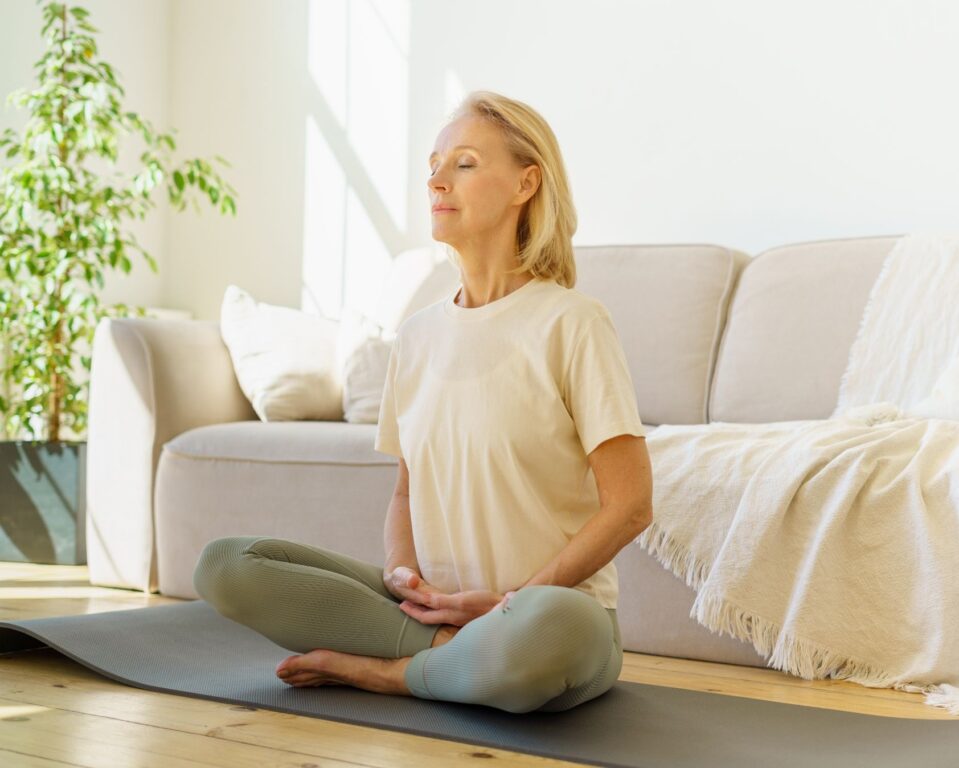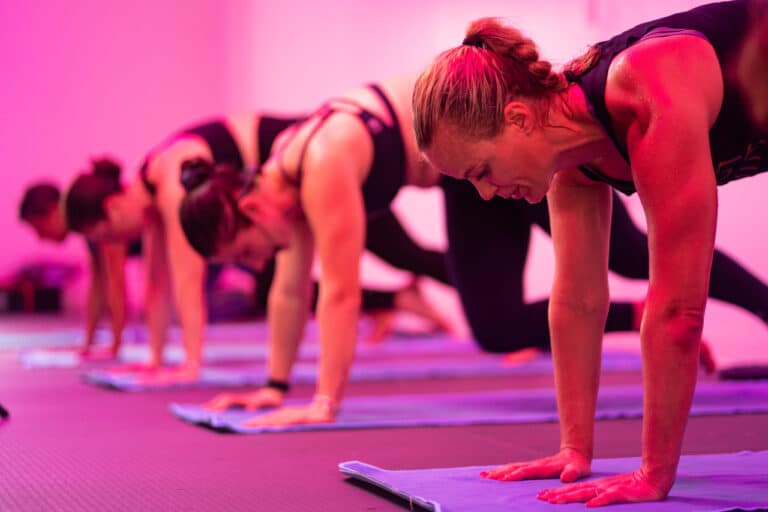If you’ve heard buzz about breathwork, but aren’t exactly sure what it is or if it’s something you want to add to your own fitness and wellness routine, we’ve got the scoop—straight from a practitioner.
A fitness industry veteran, Jenn Warwick of Breathe for Life, LLC is a certified transformational breathwork coach who has been practicing breathwork for the past two years and offers workshops, private and group sessions in various locations in the area. Here, she breaks down the practice of breathwork, its benefits, and an easy way to incorporate it into your daily life:
What is breathwork?
Jenn Warwick: Breathwork is the conscious awareness of taking a breath and, as you do, knowing it is the key force that links your mind, body, and emotional state. Our breath is a life force and a tool. And when its used with intention and with specific techniques, it shifts our physical, emotional, and psychological state in real time. Breathwork gives us the power to elevate our state of being, rewire old patterns, and heal ourselves.
What constitutes breathwork from a wellness perspective?
JW: As noted by the Global Wellness Institute, breathwork is becoming one of the hottest wellness trends—similar to yoga several years back—mainly because of its many long-term health benefits and immediate results. The breath and brain connection has been scientifically confirmed to rewire our brain patterns and shift mindset and energy levels, which is invaluable when managing stress levels, mental health, and everyday life performance.
How did you get involved in this work?
JW: I’ve been in the fitness industry for 20 years coaching and training clients, specifically in barre-based technique. This method places a big emphasis on mind-body awareness and optimizing mobility and longevity of the body.
When I was introduced to breathwork, it felt like a natural progression to add to my personal and business practice, since it involves such a high level of mind-body connection, too. I was blown away the first time I tried it. I felt my mind shift within just a few minutes, which definitely caught my attention.
In my work, I’ve always felt called to help others harness their power physically and mentally and I believe breathwork is the key to helping people access higher levels of wellbeing. My life’s mantra has been ‘movement is medicine’ and now breathwork is definitely an integral part of that medicine mantra too.

Why is breathwork important for people?
JW: Breathwork is one of the most important pillars of health because of its ability to regulate our body’s nervous system, which effects all systems in the body: pulmonary, lymphatic, digestive, respiratory, immune, endocrine, and on. The better and more efficiently we breathe, the more optimally these systems work together to heal, protect, and elevate the body.
What’s interesting is that most people are dysfunctional breathers—meaning the average person’s breathing pattern and breath speed triggers a fight or flight state for overly long periods of time, sometimes even years. And this can heavily stress the body and mind. Again and again, science has proven that breathwork has the ability to reverse stress, calm an over-active mind, and improve performance in real time—which is a key reason why it’s trending as such a compelling practice.
What types of classes/studios should people look for if they want to practice?
JW: Breathwork sessions can be tailored to every level, so no experience is required to try. An experienced breathwork facilitator can curate the session to fit most any stage of one’s wellness journey, while taking into account any existing health conditions. In all cases, the intention of any breathwork session is to heal and engage the body to use its innate power, force, and functionality.
Here’s a sample of a session format that I offer—and session length can be tailored for any:
- Activating/energizing
- Restorative/calming
- Hybrid (combo of the last two)
- Transformational Breathwork Journeys (usually 1 to 1.5 hours): “Deeper dive” sessions are curated to intentionally access the subconscious mind to cleanse, remove emotional blocks, trauma, release limiting beliefs and stuck energy.
Are there ways to incorporate breathwork into your daily life?
JW: Yes, there are simple, effective ways to incorporate it into your daily life. The goal is to make it an accessible, practical tool with fast, meaningful results.
For example, this technique helps to balance and clear a busy mind: If at times during the day, you’re feeling anxious, overwhelmed or just need a reset, try 2 to 3 minutes either sitting or lying down comfortably, breathing in and out through the nose—4 counts in, 4 counts out. (Or, 3 counts if it feels easier to access.) Nasal breathing signals rest and calm in the nervous system. Breath light, slow and deep from the belly, feeling it rise and fall—nothing forced.
Thanks for sharing all this great info with us! Anything else we should know?
JW: I offer private sessions, workshops, and group classes—contact me directly at jpwarwick@icloud.com. My website is breatheforlife1.com and you can follow me on Instagram @breathefor life_And if you’re interested in learning more, two books with a wealth of breathwork information are Breath: The New Science of a Lost Art by David Nestor and Just Breathe by Dan Brule. Both offer valuable insights and scientific research on the power of breathwork and its profound healing benefits.
View this profile on InstagramJenn Warwick (@breatheforlife_) • Instagram photos and videos




